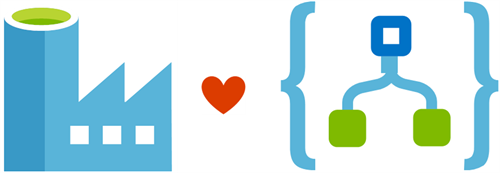In my previous post, we’ve went through the new features of Azure Data Factory 2.0 on how it leverages more triggers and allows you to build data pipelines to orchestrate your data integration both in the cloud as on-premises.
It is a serverless orchestrator where you can create pipelines that represent a workflow. In these pipelines you have sequences of activities, or steps, and have granular control on what to do if something fails or succeeds, etc. Every pipeline represents a business process that needs to run frequently or on demand.
Doesn’t this sound like Azure Logic Apps? Well you are right… but to a certain degree!
Logic Apps & Data Factory
While they both leverage a serverless orchestration I think they both shine in their own perspective: Azure Logic Apps is perfect for application integration while Data Factory is excellent for doing data integration.
Azure Data Factory allows you to interact with your data at scale by stitching together all your data stores together and build a data-centric platform inside your company ranging from copying data from one place to another, transforming data sets, loading data with bulk imports and much more. It is fully optimized for data processing and it ensures you don’t need to worry.
On the other hand, I see Azure Logic Apps being more focused on application integration where you can use it to unify all your internal & external services to create a unified infrastructure on which you can run your business processes and improve your company as a whole. The difference here is that it’s not focussed on the data itself but more the integration and connectivity with all these systems and how they communicate.
As with every Azure services it’s not about which service is better than the other, it’s about using the correct tool to get the job done.
The general rule here is that if it’s a data-centric workflow, Data Factory is probably your best bet. However, I think that combining Azure Logic Apps with Azure Data Factory is really the sweet spot.

By chaining these two orchestrators together you can create fully automated “pipelines” that join forces to achieve an end goal.
You can for example use an Azure Logic App that is in charge of data preparation by making data sets available in a specific data source which triggers Azure Data Factory for further processing. The triggered pipeline then picks up the data in the data source, processes it and when it’s finished it triggers another Azure Logic App to act on the gained business insights. This could be a Logic App that interprets the data, creates a summary of today’s sales and sendsout an email to the CEO so that he is aware of how his company is doing.
Azure Data Factory & Logic Apps, better together.
Thanks for reading,
Tom.
Subscribe to our RSS feed